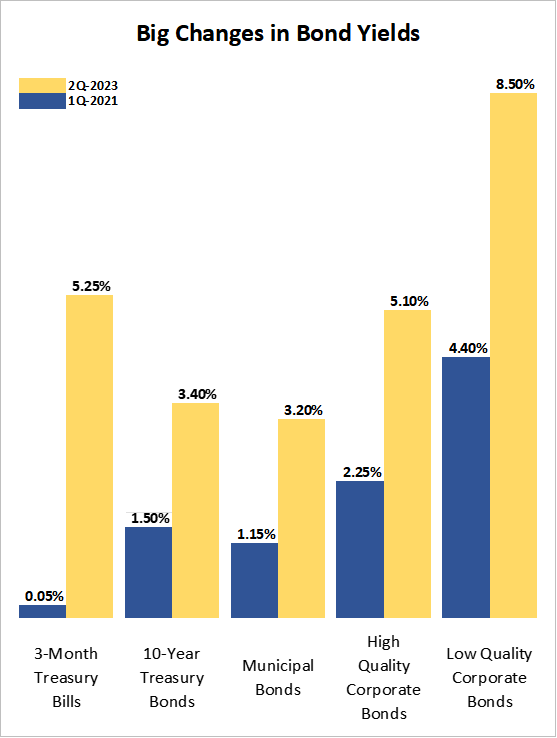Turmoil in the banking sector persisted throughout April and continues into May.
As deposit flight persisted at First Republic Bank, the pressure on the bank’s financial situation proved untenable. During the last trading day of April, the bank’s stock price cratered.
Over the weekend, regulators seized First Republic, and after a short bidding process, sold the lender to JP Morgan before the markets opened on Monday, May 1.
Three of the four largest-ever U.S. bank failures have occurred in the past two months. First Republic, which had more than $250 billion in assets at the end of the first quarter, ranks just behind the 2008 collapse of Washington Mutual Inc. Rounding out the top four are Silicon Valley Bank and Signature Bank, both of which failed in March.
While the immediate crisis may be over for the largest US banks, trouble still seems to be bubbling for mid-sized and smaller regional lenders. Los Angeles-based PacWest Bancorp, which had over $40 billion in assets at year-end 2022, experienced a precipitous stock price drop in the past week and is said to be ‘exploring strategic options’.
Persistent problems in the financial sector can be a source of concern for everyone. For folks who’ve been saving and investing for a while, worry about a 2008 financial crisis re-run in 2023 is understandable.
Key points to keep in mind, and reasons to believe that the US financial system is on firmer footing today, are:
- The biggest US banks are better fortified compared to fifteen years ago, with significant liquidity and healthy balance sheets
- Regulatory and private sector action has helped contain damage through swift wind downs of troubled institutions
- Shareholders of the failed banks have borne losses
- Most importantly, depositors have been protected
For a more in-depth explanation of what’s going on in the financial sector, I found the most recent memo from Howard Marks, Lessons from Silicon Valley Bank, to be helpful.
Marks has been investing in the credit markets for decades and is a sort of ‘Warren Buffet of Bonds’. He believes that another widespread banking crisis, a-la-2008, is unlikely.
In addition to gaining a degree of reassurance from his analysis, I found Marks’ perspective on the psychology of what’s going on to be particularly insightful. He concludes his memo by saying:
“When psychology swings in the direction of hopelessness, it becomes reasonable to believe that bargain hunters and providers of capital (i.e., investors with a long-term perspective) will be holding the better cards and will have opportunities for better returns.”
RK

















